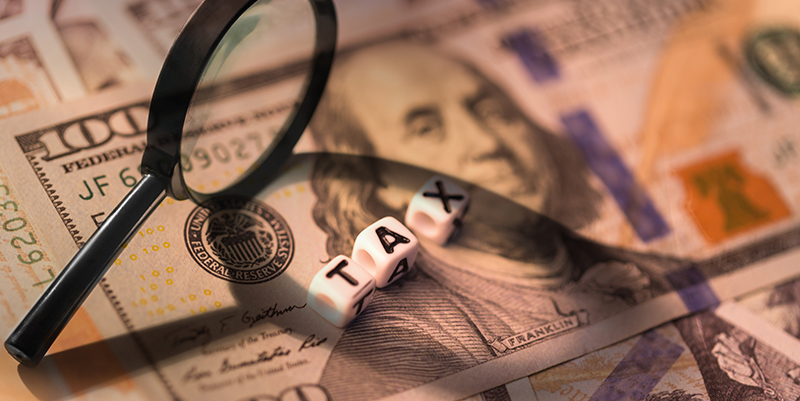
Did you know that some building owners may be eligible for retroactive tax advantages because of a recent change in federal energy policy?
In December 2019, the federal government reinstated The Energy Policy Act of 2005. The law, commonly known as EPAct, reauthorizes the Department of Energy grants program designed to improve energy efficiency in public buildings and facilities.
Passage of the law also triggers the Section 179D energy tax benefits of the Internal Revenue Code. Section 179D is an engineering-based tax incentive available to businesses that reduce energy costs in commercial buildings and some apartment buildings, as well as other energy-related renovations.
Claimants may receive a tax deduction of up to $1.80 for every square foot of new construction or renovated space. The deduction is based on improvements of three energy systems:
- Lighting: Interior and parking garages
- HVAC: Heating, cooling, ventilation and hot water
- Building Envelope: Windows, doors, roofs and insulation
To be eligible, buildings must have been completed or renovated after January 1, 2006 but before December 31, 2020. Certain energy reductions to ASHRAE standards are required, but often just building to code will meet these requirements.
The IRS also requires that the building be certified by an independent third-party engineer who is licensed in that state. They must model the building using IRS Qualified Software for Energy Modeling, provide definitions, and conduct an onsite inspection of the property.
Building owners might also be able to take accelerated write offs on the old lighting or HVAC fixtures taken out of their buildings, if it is still within the fixtures’ remaining useful life. IRS guidelines allocate a 39-year lifespan for most systems. So, if an owner or tenant rips out a system that is eligible for 20 more years of use, they can claim a deduction on the remaining value of the old system.
For example, consider the following sample costs incurred during renovation of a 10-year old 100,000 sq. ft. facility (office and warehouse combination):
| Lighting Cost | $150,000 |
| Deductions | |
| EPAct 179D Deduction | $60,000 |
| + Abandonment Deduction | + $90,000 |
| Total Deductions | $150,000 |
| x Tax Rate | x 35% |
| Cash Benefit | $52,500 |
| Lighting Cost Minus Cash Benefit | $150,000 |
| - $52,500 | |
| $97,500 | |
| – Utility/Other Rebates | - $65,000 |
| Net Cost: | $32,500 |
Who Qualifies for the Retrofit Tax Incentives?
For commercial properties, either the building owner at the time of the improvements or the tenant who paid for the improvements may qualify for the EPAct deduction.
In the case of public buildings, either municipality, county or state owners can allocate the deductions to the designer of record. Typically, that's the architect – but not always. Eligible recipients could be the lighting designer or HVAC designer, depending on the project. The deduction could also be split among designers.
How to Leverage Retrofit Tax Opportunities
While CPAs are very good at what they do, often firms don't have the benefit of in-house engineering departments and may not have the personnel or expertise needed to break down the components of a building and prepare the necessary IRS reports.
In many cases, a qualified engineering firm can help. Engineers and other specialists working with CPA firms approach renovation projects with a professional eye toward what’s being taken out, what's being put in, and related expenses.
Partnering with an engineering firm like Engineered Tax Services validates and satisfies the IRS’s documentation requirements and gives the claimant a more detailed understanding of the value of the project. The claimant’s CPA firm can then attach that report or findings to their tax filing.
Retrofit Tax Benefits = Better Retrofit ROI
Your retrofit company has an important role to play in this, as well.
First, to capture these tax advantages, it is critical to have accurate and comprehensive data on the equipment being both installed and removed.
Using audit software such as SnapCount can help retrofitters provide the building owner with this detailed information. Capturing audit data electronically empowers teams to move rapidly through job sites while recording fixture types, quantities and burn hours, all on a tablet or smartphone. Teams can even use their device's camera to add photos directly to the area under audit, and add blueprints, floor plans or hand sketches to visually tag fixture data. All of this audit information will be invaluable for your client if they decide to move forward with claiming these tax benefits.
Additionally, your customers may not be aware of these potential retrofit tax benefits. By incorporating these deductions and/or incentives into your audit proposal, you’re able to demonstrate even stronger ROI on the retrofit project.
This also enables you to position your company as a strategic partner bringing immediate value to the table – which differentiates you and improves your ability to win the bid.
As SnapCount users, you know about the game-changing power of good data. Encourage your customers to apply the same principle to their tax preparation. We will provide a detailed no cost, analysis on all of your projects. Doing so is not only good for your customer, it’s good for your business as well.






Share this post: